5 Ways Workflows Can Streamline Your Facility Operations in Adaptive Buildings
In the dynamic landscape of facility management, where adaptability is key, integrating innovative...

This week, we’re switching things up to examine a new domain that we just added to the OAP. Drumroll please. It’s cold storage. Unlike other domains which have been heavily modelled by existing ontologies such as Brick and Haystack, we could not find any existing domain model for cold storage or refrigeration. So, we started from scratch.
Our hope is that by getting this out to the community now we can heat up the conversation and get community buy-in while the development is still in its infancy.
With that, put on your 6/5 wetsuit and let’s dive in.
First, a definition. Within ontologies, a domain serves as a way to group equipment or devices with a common theme. By separating equipment into different domains, the ontology becomes more organized and easily navigated and the resulting data model becomes likewise traversable by category.
Other domains within the OAP include HVAC, Electrical Power Distribution, Lighting, Mechanical, Metering, OT Devices, etc.
As a start on our journey into the deep on refrigeration, we created an entirely new domain called “Cold Storage.” This encompasses all aspects of equipment, points and systems related to cold storage and refrigeration as its own category within the ontology. While cold storage does share some conceptual overlap with HVAC, we felt that refrigeration was different enough in terminology, equipment and application from HVAC, that it was necessary to define a unique category to organize and group all the new additions to the data model.
If you’re a developer and have poked into the OAP yaml files on github, you will notice a new subfolder called “cold-storage.”
Now that the domain is done and dusted, we’ve also added several new equipment types into the Cold Storage domain. In the OAP, equipment are nested within domains as a way to define and narrow their specifications to the core essence of what they are and what they do. Within the Mechanical domain, for example, you’ll find Air Handling Units and Chilled Water Plants, all types of Fans (as discussed in our first article of this series), Pumps, VAVs, etc.
Most of these new Cold Storage equipment could be described simply as “places that keep cold stuff cold,” and in any other setting that may be enough. But not in an ontological setting and not at Buildings IOT! Because we are data modeling obsessives (and because we believe every good software shop should be), we divided the new Cold Storage equipment into two categories. This distinction is delineated based on whether the equipment is either:
Let’s evaluate each category and the new equipment therein.
Refrigerator – You’re familiar with these. You may define them as “a place where leftovers go to die,” or “a regulatory pain in the you-know-what.” For our purposes, what makes a refrigerator an OAP Refrigerator is that it has its own compressor, condenser, and a door. We come across these in a variety of industries from restaurants and commercial kitchens to hospitals and labs.
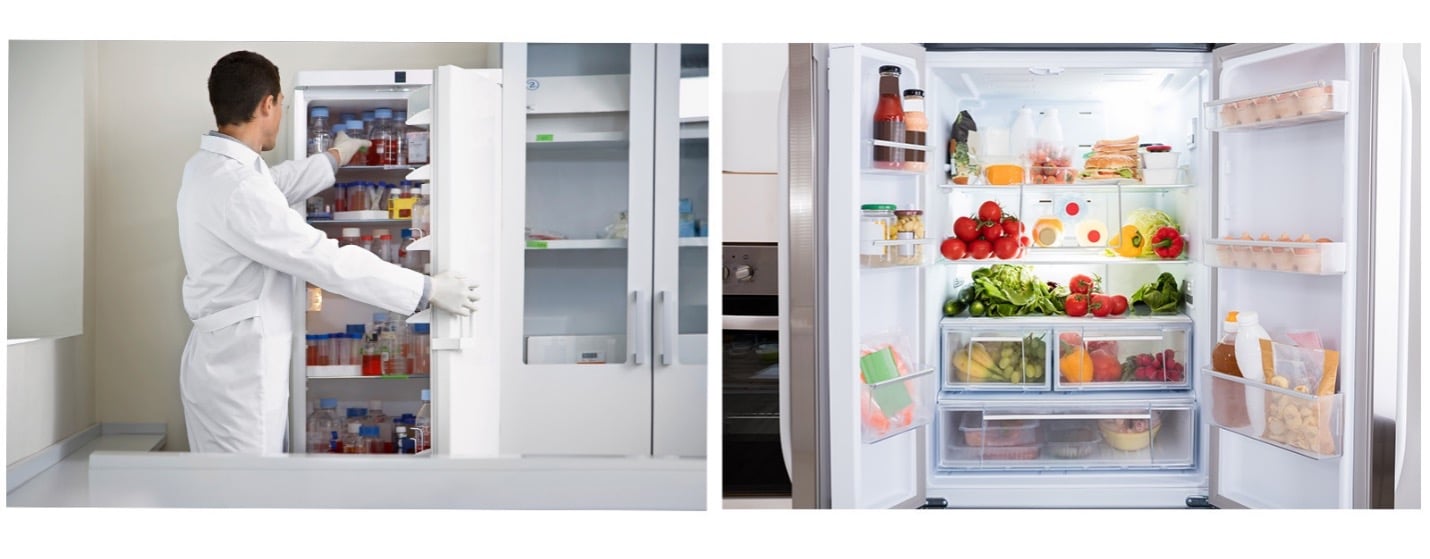
Examples of Refrigerators. No energy or food was wasted in the taking of these pictures.
Cold Cabinet – essentially a big box for keeping things cold. You may be thinking “Isn’t a refrigerator also a big box that keeps things cold?” To which the refrigerator might respond “Who are you calling a big box?”
Our distinction here is to define that the cold cabinet does not have its own compressor or condensing unit and is instead served by an external system. This is important for a relational model like the OAP, because a Cold Cabinet signals the automatic need for relationship to other equipment. Because, while the Cold Cabinet doesn’t have its own compressor or condensing unit, it certainly needs to get that cooling capacity from somewhere - those baby carrots ain’t gonna chill themselves.
Doors are also optional on these bad boys, which matters when you’re tasked with measuring and reporting on the temperature of the cabinet and surrounding area. We find this equipment in supermarkets, convenience stores and some quick serve restaurants. 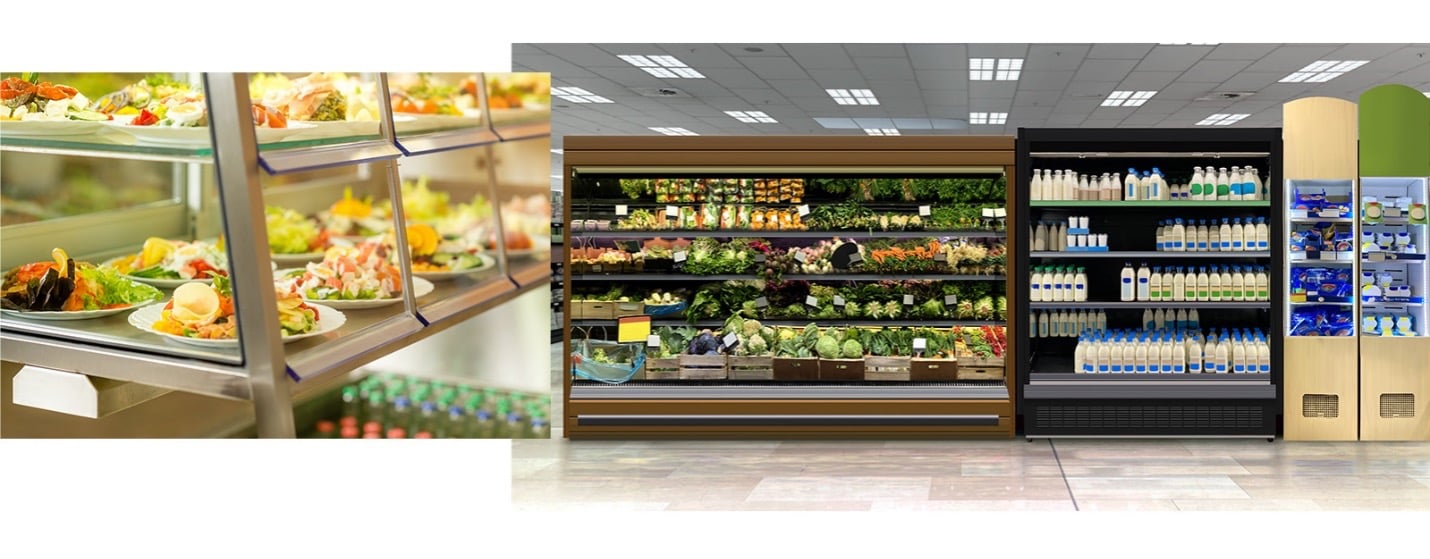
Examples of cold cabinets. Yes, we had to take snack breaks during the writing of this article.
Cold Room – Like a cold cabinet but you can physically walk into the entire cold space. Which is also why it’s often referred to as a “walk-in refrigerator” but we’re trying to stay on a theme here. We find these in larger restaurants and grocery stores.
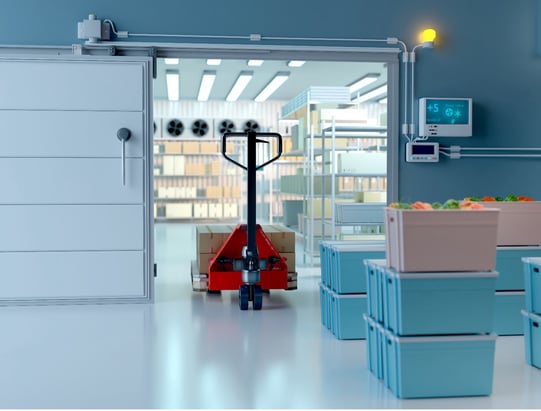
Example of a cold room with FCU, controller and thermostat. Not pictured but also part of the system is an outdoor or condensing unit.
Refrigeration FCU – This is the actual evaporator equipment that keeps a cold room cold. It harkens back to the point made in the Cold Cabinet definition, this equipment is served by and related to other equipment.
A Refrigeration FCU is essentially a DX fan coil unit but with a specific application for cold rooms. This could be modeled in its own right or flattened into the cold room. We created a provision for it for now (and would love to hear your thoughts on this decision in the comments).
Most cold storage indoor equipment such as cold rooms and cold cabinets are served by a refrigerant “plant.” The Refrigeration Plant would typically contain compressors and heat rejection equipment such as dry coolers, fluid coolers or other types of condensing units. This type is analogous to other plant types such as Chilled Water Plant and Hot Water Plant which are equipment that contain other equipment.
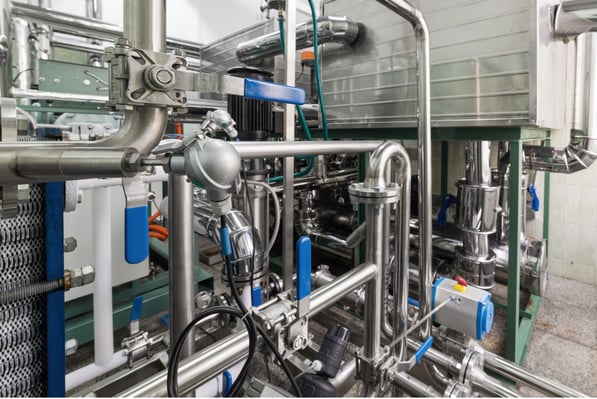
Rooftop refrigeration plant equipment
Tying all these new concepts together is a new type of system, but one that leans on a system type already embedded in OAP – refrigerant systems, similar to those you will find in the Mechanical domain.
Refrigeration System – subtypes from Refrigerant system, sister type to a VRF system (which also subtypes from a Refrigerant system) and friend to all. The new Refrigeration System is specifically for supermarket or other cold storage applications where you would group a refrigerant plant to several indoor cold storage equipment such as the aforementioned cold cabinet or cold room to further enhance the relationship model and show what equipment is served by the plant and what equipment the plant serves.
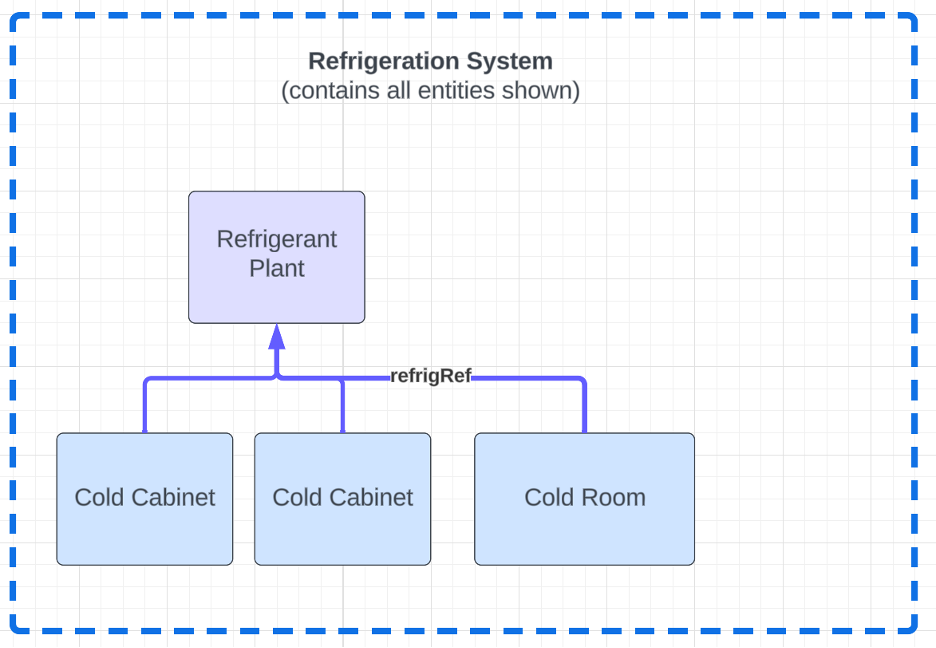
Simple Schematic of a Refrigeration System
A driving use case for the creation of this new domain for Buildings IOT is not necessarily to monitor or connect directly to the refrigeration equipment or plant itself but to add monitoring capabilities via 3rd party IOT sensors. These would get added via a nesting relationship inside the cold storage equipment.
For example, a common use case is the need to monitor temps inside cold cabinets via small, wireless temperature sensors. To model this, one could nest Air Temperature Sensor devices inside cold cabinets via an equipRef.
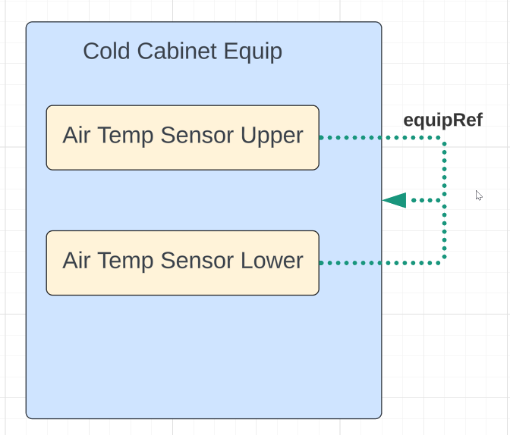
Nesting Relationship of IOT Sensors for Cold Storage Applications
Are you a refrigeration expert? Are there gaps in our new model or areas for improvement? Did we miss an opportunity for ontology alignment? Let us know. We’re just over here chilling and we’d love to hear from you!

Annie Dehghani, PE is a Senior Building Systems Application Engineer with Buildings IOT. Annie's expertise centers around building systems analytics including everything from initial data modeling to developing fault detection diagnostics and predictive maintenance algorithms. Her background in sustainable engineering design and consulting gives a unique window into what buildings look like and where they are going. She leads the Ontology Alignment Project (OAP) advisory board and is an active member of the building data modelling community.

In the dynamic landscape of facility management, where adaptability is key, integrating innovative...
You're a facilities manager looking to optimize your operations and prove your worth to upper...